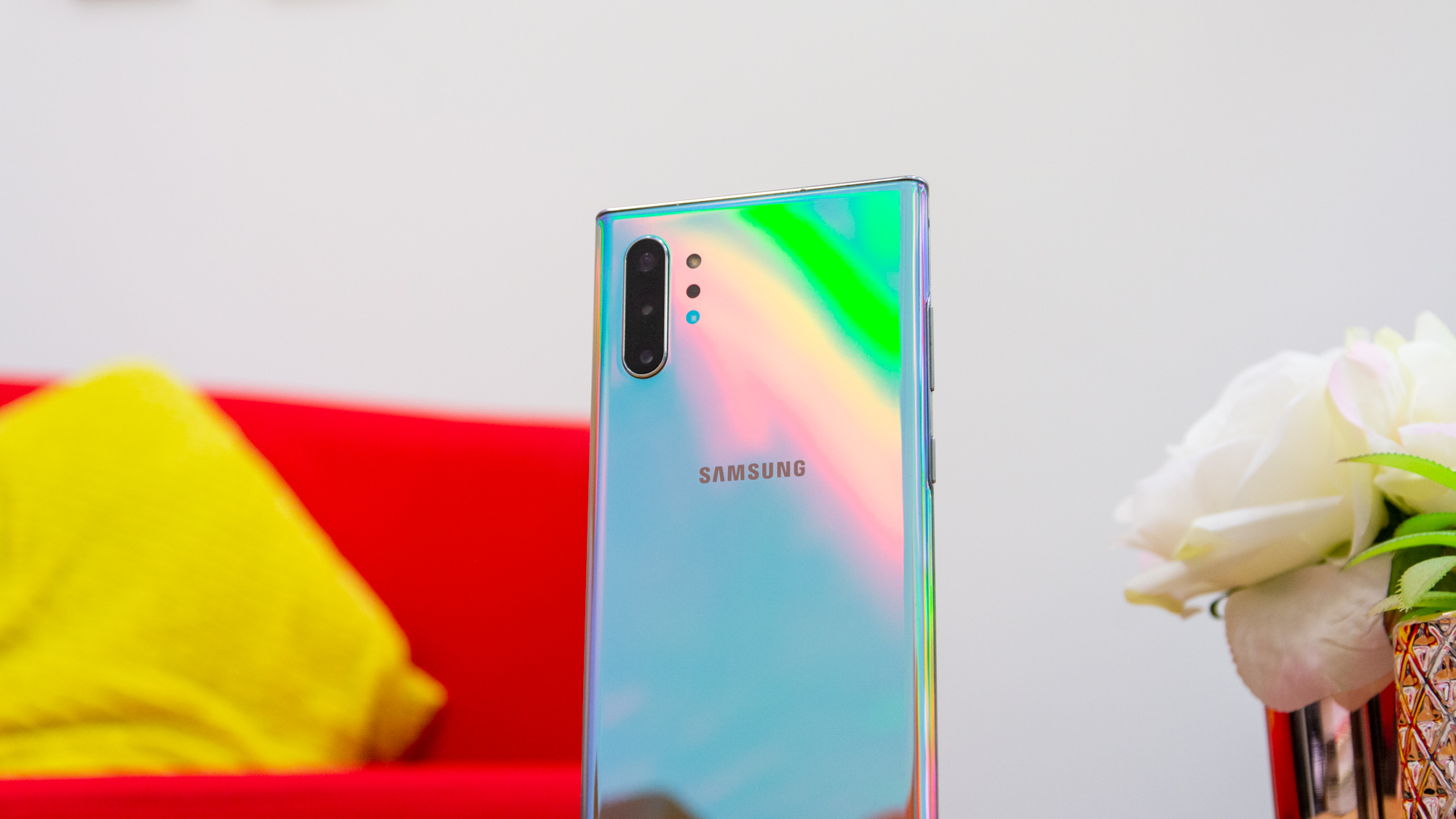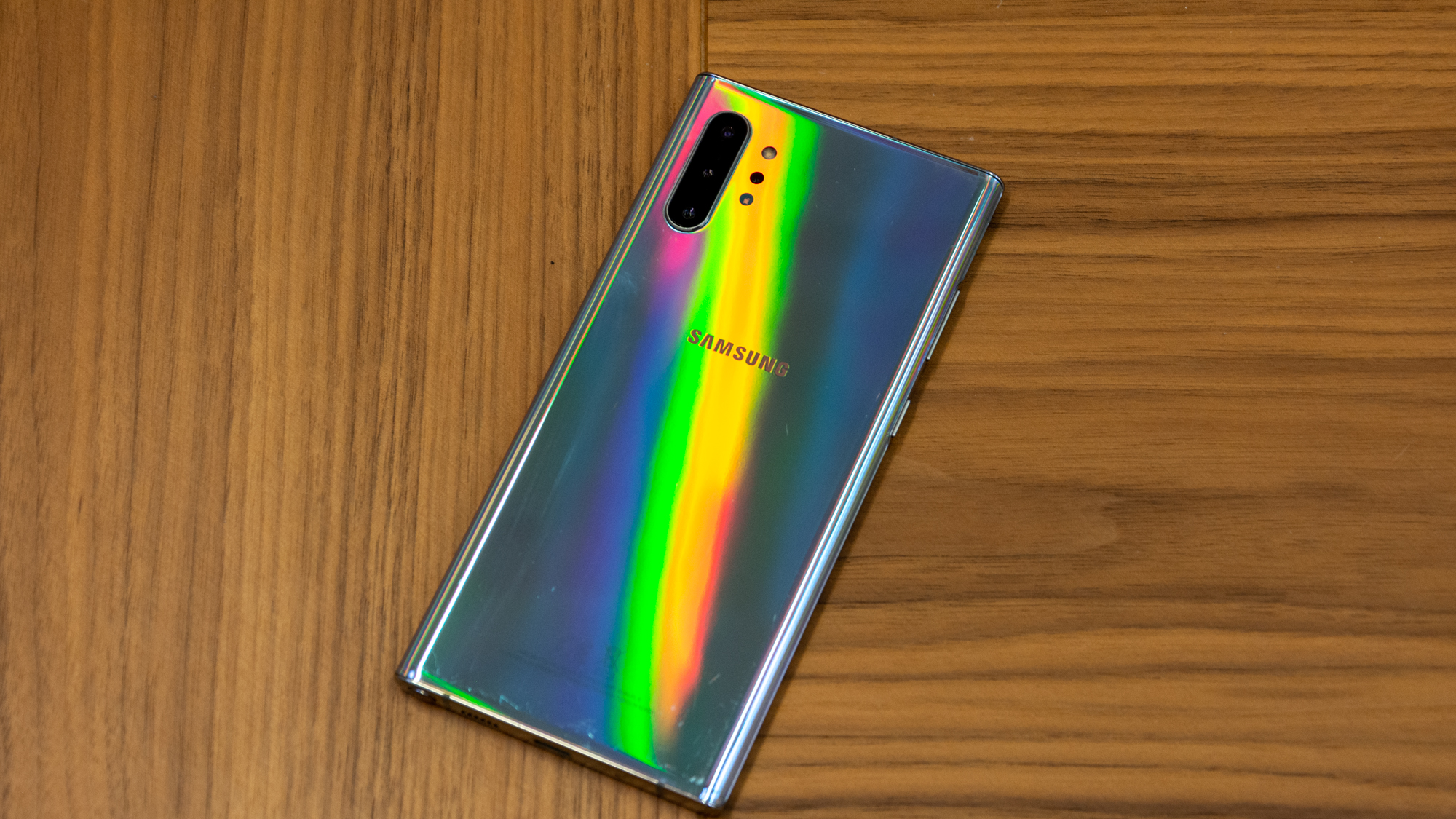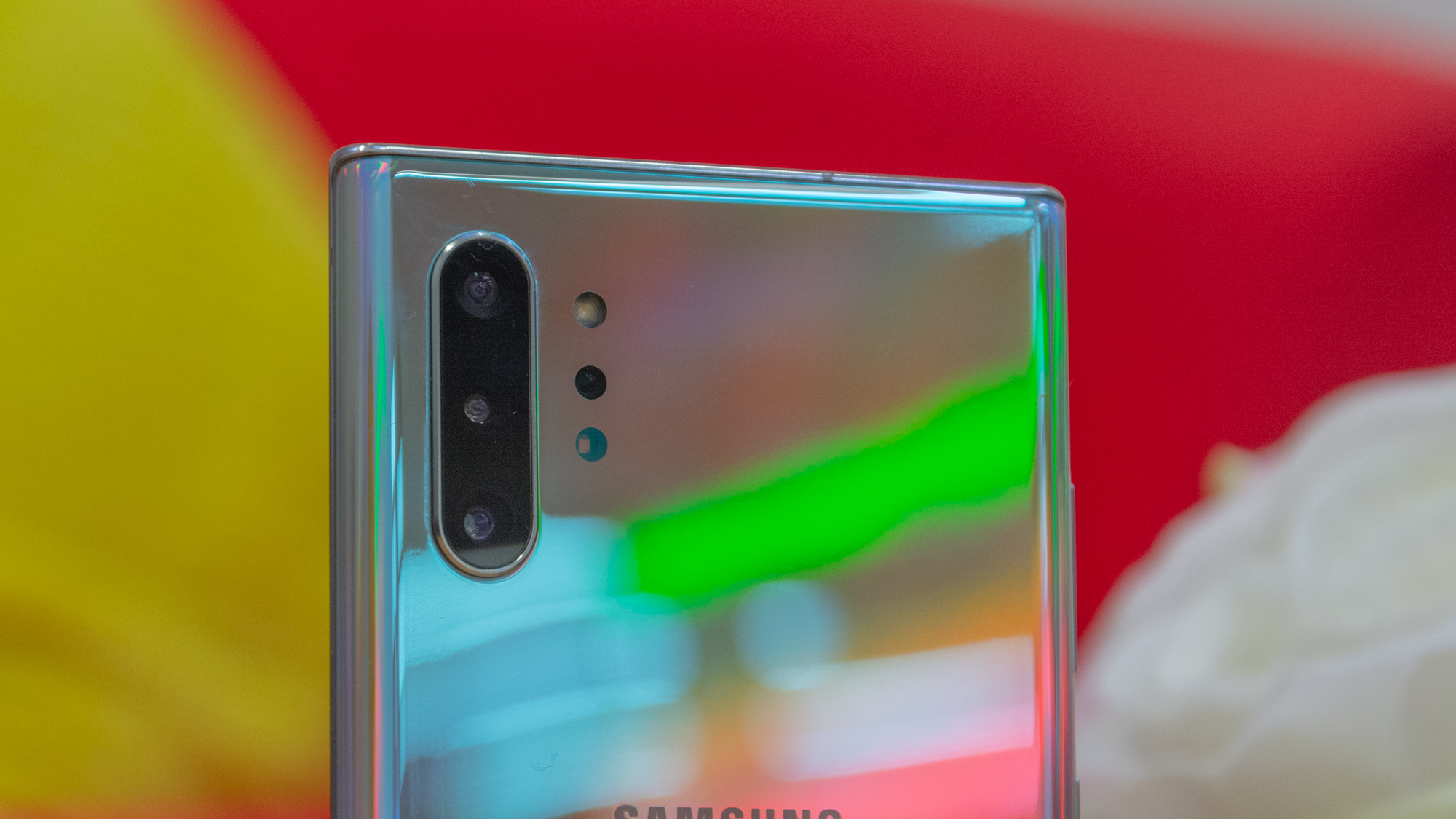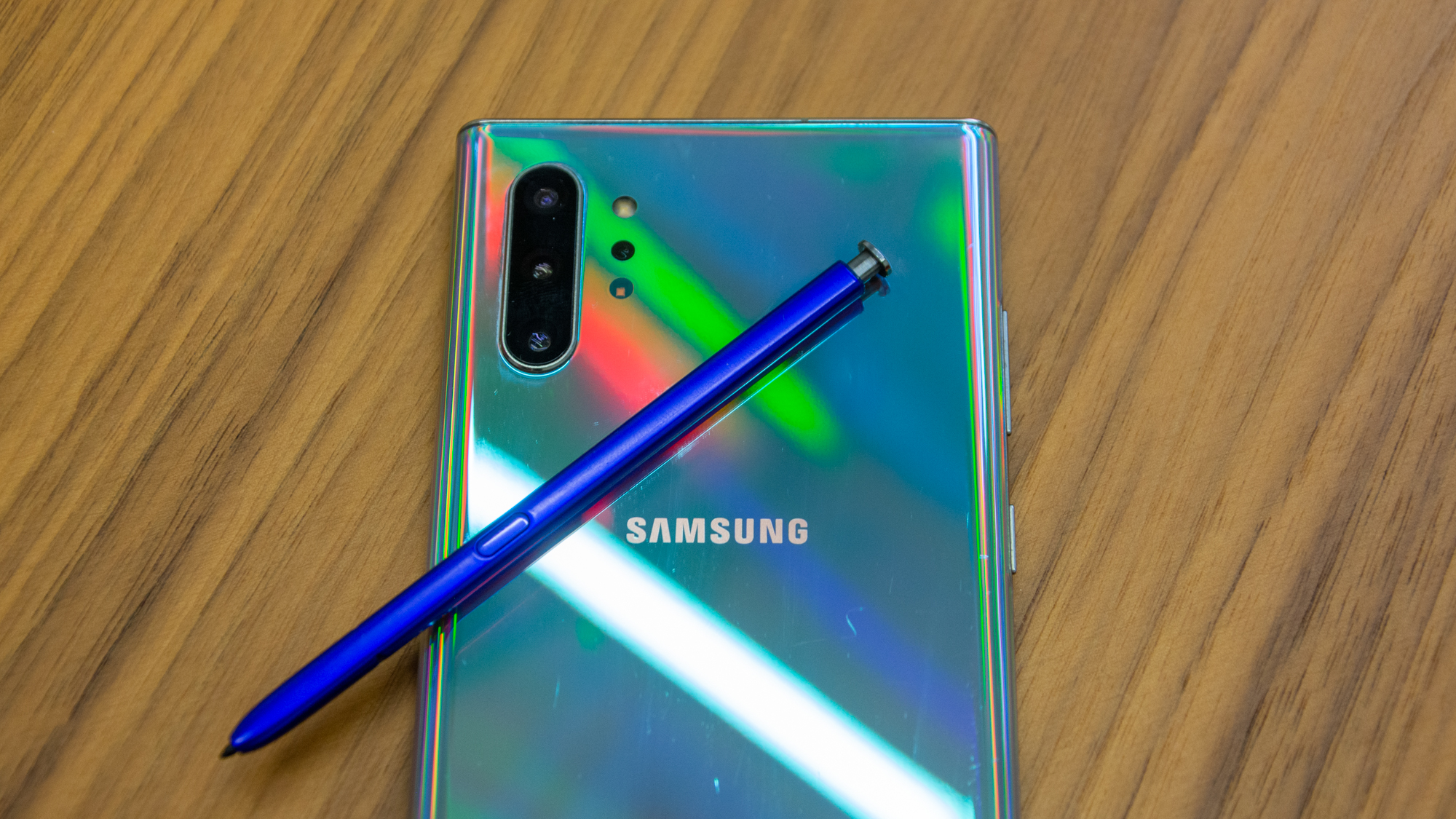Samsung Galaxy Note 10+ review: Bigger, badder and better than ever
The latest Note isn’t just Samsung’s biggest phone - it’s also its best
Samsung’s Note 10+ is the absolute pinnacle of its engineering achievement. Forget the foldable pretender – the Note 10+’s superb camera, performance and battery life make it the real crown jewel of the Galaxy range.
-
+
Long battery life
-
+
Smart S-Pen and DeX features
-
+
Great performance
-
-
Bixby is still pointless

Smartphones are increasingly becoming as capable as laptops in terms of raw processing power and functionality, and nowhere is that more evident than Samsung's Galaxy Note range. Originally designed for "power users", a boatload of features and functionality has always been the hallmark of the Notes.
This latest addition to the range, the Samsung Galaxy Note 10+, continues this tradition whilst also being one of the company's most well-equipped and carefully-designed phones to date. Going toe-to-toe with Apple's latest crop of iPhones, the Note 10+ makes a compelling case for itself as a do-it-all business device.
Samsung Galaxy Note 10+ review: Design
This phone marks a first for Samsung, in that it's the first time the Note range has been augmented with a larger "plus" model. This has been a common element of the main Galaxy range for a few years, but it may seem like an odd choice for the Note range, which has historically been among Samsung's larger devices. Phones have become generally larger, though, and the Notes aren't the goliaths they used to be. The regular Note 10, for example, has a smaller screen than both the Galaxy S10+ and Apple's iPhone 11 Pro Max. The Note 10+, on the other hand, puts both in the shade.
It certainly cuts a striking figure. Like Samsung's main Galaxy series, the curved, edge-to-edge screen is rather impressive and, coupled with the almost iridescent mirrored rear, it's very eye-catching. Of course, part of what makes it so eye-catching is the sheer size of the thing; it's almost 7in across the diagonal, and at a weight and thickness of 196g and 7.9mm, it's one of the chunkier phones we've seen recently. It's got Gorilla Glass 6 both front and back, too.

In style, it's not too different from the Note 9. It's got slightly more squared-off corners, the front camera has been relocated to a hole-punch cutout and the rear camera array is now arranged vertically rather than horizontally, but otherwise, there isn't all that much to set it apart from its predecessor.
Samsung Galaxy Note 10+ review: Display
The screen might be large, but you'd be hard-pressed to argue it's not making the most of its size. It's got Samsung's characteristic level of quality, and the 6.9in display has a maximum resolution of 3,040 x 1,440. Bear in mind, however, that like all Samsung's phones, it's set to a lower 'FHD+' resolution by default, which sets the display at 2,280 x 1,080. In order to get the maximum quality out of it, you'll need to actively go into the display settings and change the resolution to WQHD+.
With that done, the display is a delight; brightness hits a blazing peak of 715cd/m2, and the gorgeous AMOLED panel managed to accurately represent 96.2% of the sRGB gamut. It features the usual in-depth colour customisation options too, so you can tweak the particulars of the colour reproduction with an exacting level of detail.
Not that you'll need to - thanks to its support for the HDR10+ support, content delivered via services like Amazon Prime Video and Netflix looks outstanding and the overall level of quality in day-to-day use is exceptional. What's more, the added working area of the larger screen means that using the S-Pen feels more comfortable than ever (more on that later).
Samsung Galaxy Note 10+ review: Specs and performance
Performance has always been a strong suit of the Note range, but this model goes above and beyond even by those lofty standards. As usual, the European version of the Note 10+ is using one of Samsung's own Exynos chips - the Exynos 9825, to be precise. A similar processor to the one found in the Galaxy S10+, this chip (coupled with 12GB of RAM) delivered functionally identical results to the S10+ in our tests.

That puts it among the fastest Android handsets currently available, although Apple has reclaimed the overall top spot. The iPhone 11 is more than 30% faster than the Note 10+ for both single- and multi-core operations and the 11 Pro Max is better still, although not by much.
Ordinarily, we wouldn't put too much stock in a smartphone's performance: Unless it's truly woeful, any device that's mid-range or above should have more than enough power to cope with all but the most taxing of applications, so it's a bit of a moot point in most cases. Where Samsung really puts that power into play is with its Dex Mode, which we'll come to shortly.
Battery life is another standout feature for the Note 10+. At the phone's maximum resolution, it lasted 19hrs 56mins in our video playback battery test, which puts it firmly among the best of the best. Dial the resolution back or make use of Samsung's many clever power-saving features, and you'll get even more out of it.
Samsung Galaxy Note 10+ review: Camera
For the last few years, Samsung has been duking it out with Apple, Google and Huawei to be the top dog of smartphone photography and the Note 10+ lands a few solid blows. For starters, it's fitted with the same excellent dual-aperture camera unit as the Note 9 (f/1.5 and f/2.4) with a 2x telephoto lens and a 12-megapixel sensor. It now sports a 123-degree wide-angle lens in addition to those, as well as a new depth sensor to improve the bokeh effect of portrait mode photos.

Unsurprisingly, pictures are gorgeous - dripping with detail in both high and low-light conditions, with vivid colours and plenty of texture. There's oodles of different shooting modes for various situations and the results are great across the board. Video capabilities are good too, including 4K 60fps recording and HDR10+ recording (although not simultaneously) and both optical and electronic image stabilisation. In short, the camera is as good as you'd expect from a top-of-the-line Galaxy.
Samsung Galaxy Note 10+ review: S-Pen, Dex Mode and other features
One of the signature selling-points of the Note range (pun absolutely intended) is the S-Pen stylus, and as we alluded to earlier, it's now better than ever. Occupying its usual slot in the bottom-right corner of the chassis, it's been spruced up significantly, with improved battery life and a host of under-the-hood software improvements.
Chief among these are a suite of new 'Air actions', which allow you to control certain functions by gesturing with the S-Pen. They're fairly simple - flick it up and down to adjust volume, left and right to cycle through music tracks or photos, draw a little circle to change camera modes, and so on - but they're surprisingly intuitive. They do require you to have the easily-misplaced S-Pen out of its housing to use them, but they're a neat added feature.
Another new feature is the Note 10+'s ability to instantly transcribe your handwritten notes, making them much easier to export and share with colleagues or partners. This only works within the Samsung Notes app, but it's easy enough to copy the results into an email or Google Doc. There's also the "AR Doodle" function, which lets you draw something and then apply it to a video, but this is more of a fun gimmick than genuinely useful.
Despite all the improvements, however, we still found that the most use we got out of the S-Pen was as something to idly fidget with. The larger screen makes artwork and note-taking easier than ever, but we still didn't get all that much mileage out of the S-Pen.

What will prove much more useful for businesses, however, is DeX Mode. We've covered Dex Mode in detail for previous Samsung devices, and it's still as capable and enterprise-ready as it was on the S10, but with the added bonus that it now works on laptops too. Whereas previous implementations of DeX required you to connect the phone to a monitor, you can now connect the Note 10+ straight to a Windows laptop or MacBook.
Once you've downloaded the Samsung DeX app, you can use the phone's apps and features in a desktop-style environment directly from your notebook. Personally, we still prefer the external monitor option (which is more useful from an agile working perspective) but it's yet more evidence that the Note range is one of the most business-friendly devices out there.
Elsewhere, the usual suite of useful features is present and correct: Both wired and wireless fast-charging are available, as well as IP68 waterproofing and expandable storage up to 1TB, in addition to the 256GB base allocation. Facial recognition and fingerprint recognition also offer biometric security, backed by Samsung's Knox security software. Bixby is (bafflingly) still included, but thankfully Samsung has finally ditched the physical activation button, leaving it to be summoned by holding down the power button - which is nothing if not a blessing.
Samsung Galaxy Note 10+ review: Verdict
If the Note series is a showcase of the full range of Samsung's technical capabilities, then the Note 10+ is a tour de force. The performance and battery life are outstanding, the design and display are both beautiful to behold, and the whole thing is wrapped up with some of Samsung's smartest and most capable software yet.
Add to that one of the most sophisticated and well-rounded cameras ever to grace a smartphone and you have a device which is an unabashed delight to use. While the Galaxy Fold may be the more eye-catching device, this is inarguably the better option for enterprise customers and a no-brainer for businesses that want their staff to have the maximum mobile capability.
Verdict
Samsung’s Note 10+ is the absolute pinnacle of its engineering achievement. Forget the foldable pretender – the Note 10+’s superb camera, performance and battery life make it the real crown jewel of the Galaxy range.
| Processor | Octa-core Samsung Exynos 9825 (2x2.73GHz, 2x2.4GHz, 4x1.9GHz) |
| RAM | 12GB |
| Screen size | 6.8in |
| Screen resolution | 3,040 x 1,440 |
| Pixel density | 498ppi |
| Screen type | Dynamic AMOLED |
| Front camera | 10-megapixel f/2.2 |
| Rear camera | 12-megapixel (f/1.5-f/2.4), 12-megapixel 2x telephoto (f/2.1), 16-megapixel ultra-wide (f/2.2), depth sensor |
| Flash | LED |
| Dust and water resistance | IP68 |
| 3.5mm headphone jack | No |
| Wireless charging | Yes |
| USB connection type | USB Type-C |
| Storage options | 256GB |
| Memory card slot (supplied) | microSD (up to 1TB) |
| Wi-Fi | 802.11ax |
| Bluetooth | 6 |
| NFC | Yes |
| Cellular data | 4G, 5G |
| Dual SIM | Yes |
| Dimensions (WDH) | 162 x 77 x 7.9 mm |
| Weight | 196g |
| Operating system | Android 9 |
| Battery size | 4,500mAh |
Get the ITPro daily newsletter
Sign up today and you will receive a free copy of our Future Focus 2025 report - the leading guidance on AI, cybersecurity and other IT challenges as per 700+ senior executives
Adam Shepherd has been a technology journalist since 2015, covering everything from cloud storage and security, to smartphones and servers. Over the course of his career, he’s seen the spread of 5G, the growing ubiquity of wireless devices, and the start of the connected revolution. He’s also been to more trade shows and technology conferences than he cares to count.
Adam is an avid follower of the latest hardware innovations, and he is never happier than when tinkering with complex network configurations, or exploring a new Linux distro. He was also previously a co-host on the ITPro Podcast, where he was often found ranting about his love of strange gadgets, his disdain for Windows Mobile, and everything in between.
You can find Adam tweeting about enterprise technology (or more often bad jokes) @AdamShepherUK.
-
 ‘Phishing kits are a force multiplier': Cheap cyber crime kits can be bought on the dark web for less than $25 – and experts warn it’s lowering the barrier of entry for amateur hackers
‘Phishing kits are a force multiplier': Cheap cyber crime kits can be bought on the dark web for less than $25 – and experts warn it’s lowering the barrier of entry for amateur hackersNews Research from NordVPN shows phishing kits are now widely available on the dark web and via messaging apps like Telegram, and are often selling for less than $25.
By Emma Woollacott Published
-
 Redis unveils new tools for developers working on AI applications
Redis unveils new tools for developers working on AI applicationsNews Redis has announced new tools aimed at making it easier for AI developers to build applications and optimize large language model (LLM) outputs.
By Ross Kelly Published
-
 Google layoffs continue with "hundreds" cut from Chrome, Android, and Pixel teams
Google layoffs continue with "hundreds" cut from Chrome, Android, and Pixel teamsNews The tech giant's efficiency drive enters a third year with devices teams the latest target
By Bobby Hellard Published